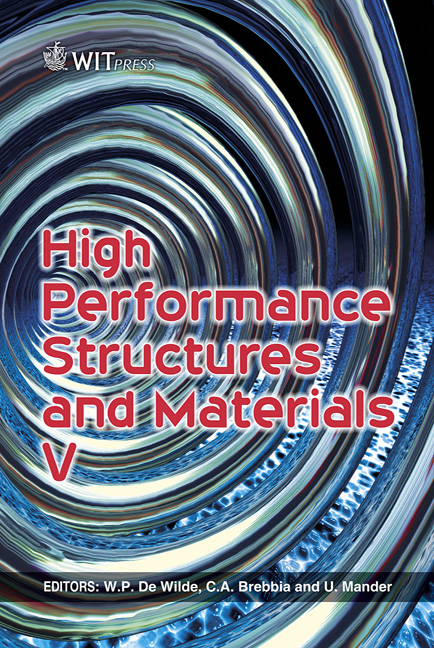A Study On The Vibration Control Of An Ultra-high Performance Concrete Pedestrian Cable Stayed Bridge
Price
Free (open access)
Transaction
Volume
112
Pages
10
Page Range
309 - 318
Published
2010
Size
1,087 kb
Paper DOI
10.2495/HPSM100291
Copyright
WIT Press
Author(s)
Y. J. Kim, W. J. Chin, E. S. Choi, J. Y. Kang & B. S. Kim
Abstract
The first pedestrian cable stayed bridge using ultra-high performance concrete (UHPC) has been designed and constructed in Korea. Our research team want to verify the practicability and feasibility of cable stayed UHPC highway bridges by means of the actual erection of a pedestrian cable stayed UHPC bridge as a test bed. According to the analysis and the preliminary vibration test of the pedestrian cable stayed UHPC bridge constructed, the results indicated that satisfactory serviceability in terms of vibration was secured for most of the pedestrian walking load cases. However, some responses exceeding the limiting criteria occurred in the case of impacts induced by the jumping of a pedestrian. Accordingly, TMDs (Tuned Mass Dampers) were installed on the parapet of the bridge in order to reduce vibrations. The TMD performance verification test showed that the maximum acceleration response of 0.186g, measured prior to the installation of the TMDs, reduced by more than 49% after the installation of the TMDs to reach a value of 0.095g, satisfying the limiting criteria of 0.1g in Korea. Keywords: ultra high performance concrete, cable stayed bridge, vibration control, TMD. 1 Introduction There are very few applications of UHPC (Ultra High Performance Concrete) for bridge structures. In Korea, a typical example is the Seonyu pedestrian girder
Keywords
ultra high performance concrete, cable stayed bridge, vibration control, TMD





